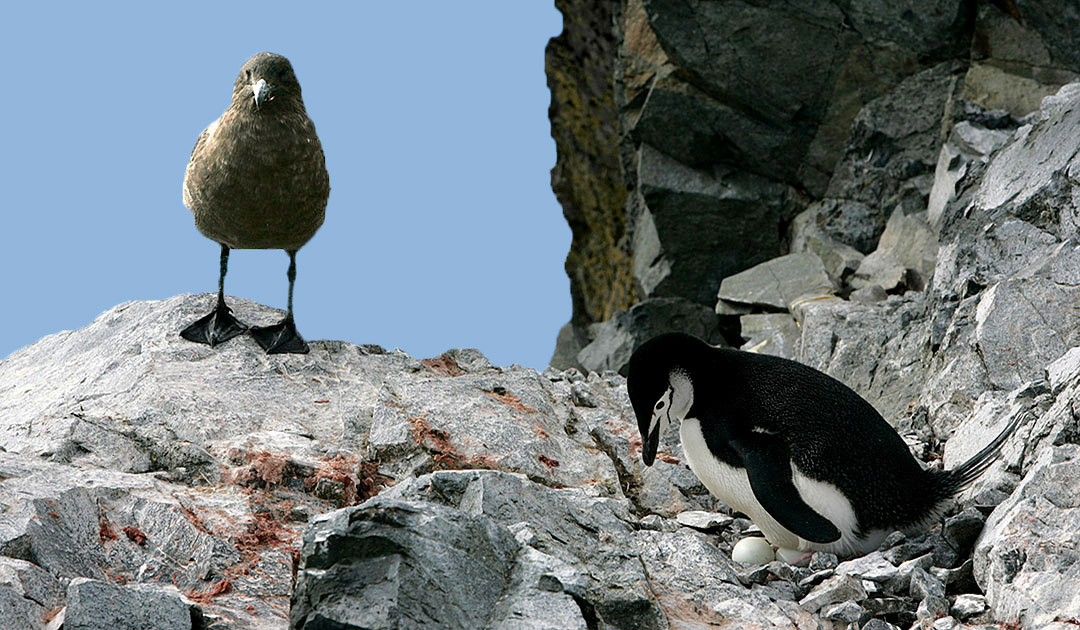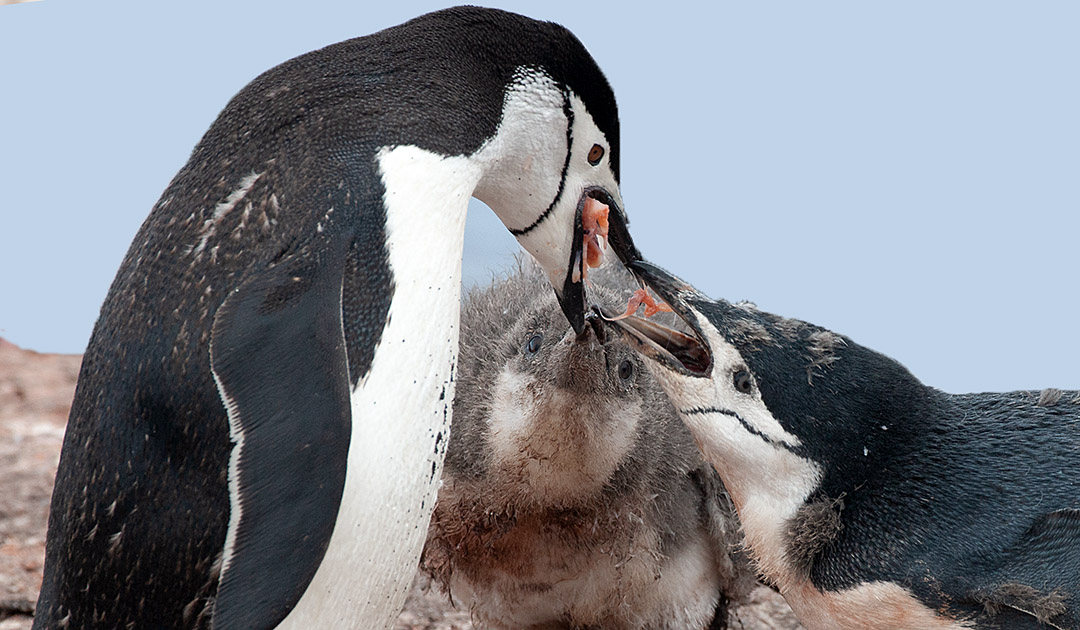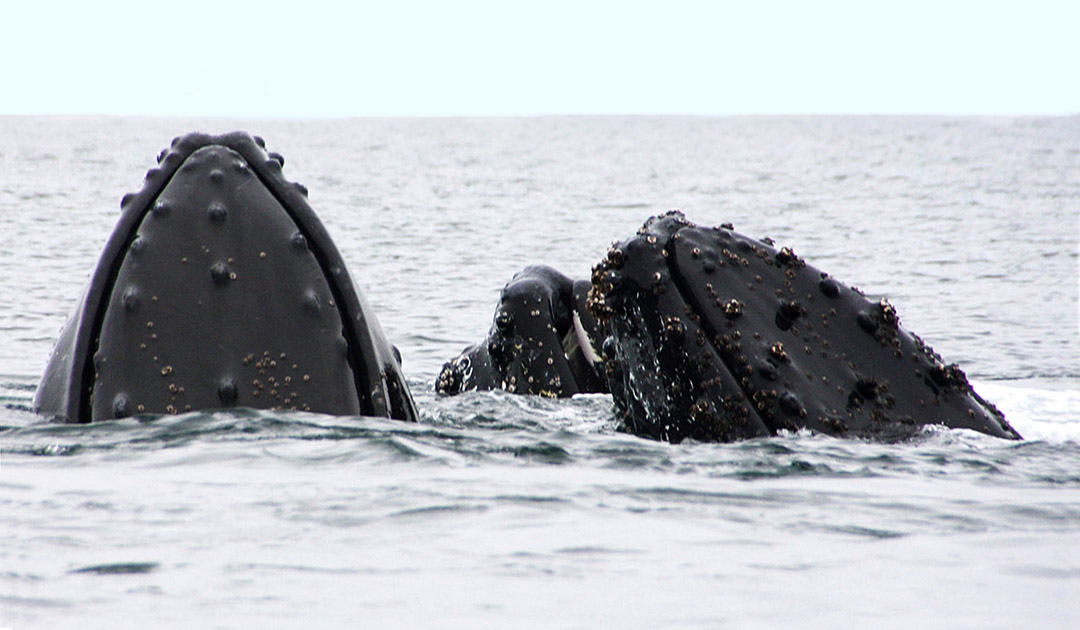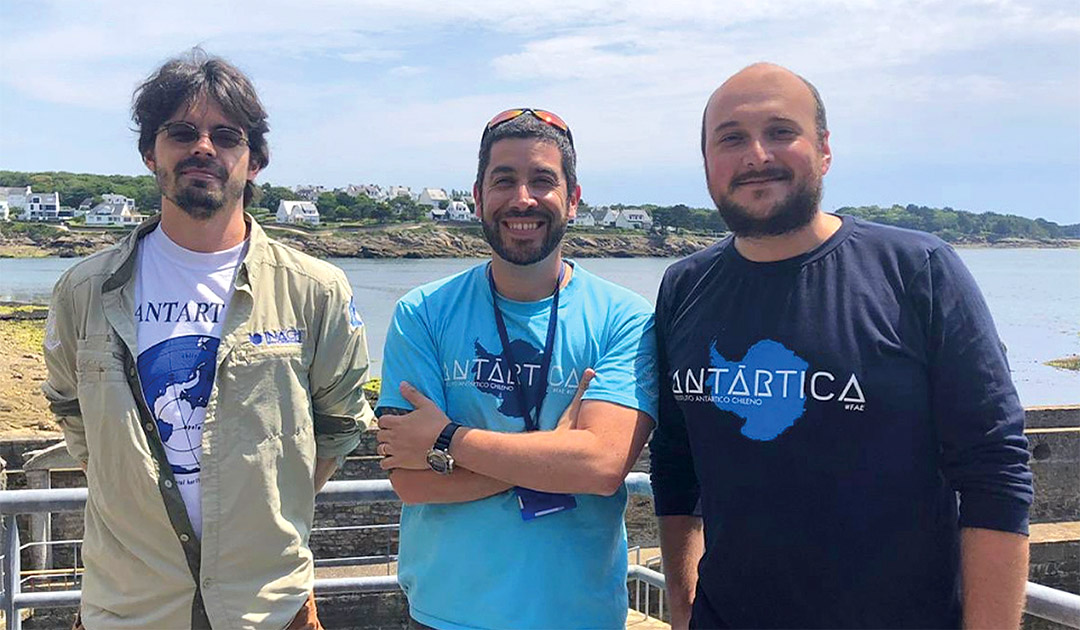
The chinstrap penguinPygoscelis antarctica) mainly lives on the Antarctic Peninsula, but also along the Antarctic coast and on a few islands in the South Atlantic and the Subantarctic islands. The characteristic feature of the penguin, which grows to 75 cm, is a black, narrow stripe running from the back of the head across the throat. The population is estimated at 8,000,000 breeding pairs according to the IUCN (Red List of Threatened Animals), of which 4,000,000 live in the South Sandwich Islands alone, and is categorized as “Least concern”.
Nearly 60% of the chinstrap penguin population breeds on the Antarctic Peninsula and neighboring South Shetland, and on the South Orkney islands a little further north. A study now shows that chinstrap penguins in this area experienced a dramatic decline of about 30% in just three generations. Not included in this study are the chinstrap penguins on the South Sandwich Islands further east.

Study shows a marked decline
The alarming result is based on research conducted by Dr. Lucas Krüger, Dr. Francisco Santa Cruz and Dr. César Cárdenas for the “Instituto Antártico Chileno” (INACH) and the “BASE Millennium Institute” and recently published by the journal Diversity .
It shows that in a period of 40 to 50 years, about 62% of the colonies on the islands suffered a decline of more than 50%.
The authors state in their paper that due to the 30% population decline they calculated within three generations, penguins should be changed from “Least concern” to “Vulnerable” on the IUCN (International Union for Conservation of Nature) Red Species List.
To conduct their elaborate analysis, the authors used standardized records and counts of penguins on the Antarctic Peninsula taken since 1960. Similarly, since 2017, an international group of scientists has been dedicated to compiling all existing information and making it available on an annually updated, freely accessible platform.

Possible causes for the decline
Adding to the fact surrounding the dramatic decline in chinstrap penguin populations is the fact that the suspected causes are unlikely to be reversed in the short and medium term. But there has been a long-running debate among scientists about the factors that could lead to the decline of chinstrap penguins.
One factor is that less krill, the penguins’ main food, is available in the northern part of the Antarctic Peninsula due to warming and sea ice retreat in winter. Other relevant hypotheses, in addition to the increase in Antarctic krill fisheries, relate to the recovery of whale populations, which are also important consumers of Antarctic krill.
“It is also likely that other factors are interacting, mainly related to climate change, affecting the survival of chicks in breeding colonies and juveniles in their first year of life,” explains Lucas Krüger. “These factors may have contributed to population dynamics, although evidence suggests that this could only happen in years of low krill abundance,” Kruger adds.

What next?
Lucas Kruger explains that the models causing changes in the Antarctic Peninsula ecosystem, which he predicted given various environmental scenarios, indicate that current decline trends should be followed. “But at the same time, it is complex and difficult to make an accurate assessment of the species’ future with the knowledge currently available. Right now, we can say that populations have declined significantly in the recent past and could become further endangered if trends continue,” he continues. “A better understanding of how this species is related to rapid environmental changes on the Antarctic Peninsula is critical.”
The Antarctic Peninsula is one of the areas of the planet that has suffered most rapidly from the effects of global warming in recent years, and these changes are of great concern to scientists around the world.

INACH (Instituto Antarctico Chileno) is a technical body of the Ministry of Foreign Affairs with full autonomy in all matters related to Antarctica and of a scientific, technological and dissemination nature. INACH follows national Antarctic policy by promoting the development of excellent research, participating effectively in the Antarctic Treaty System and related forums, strengthening the Magallanes region as a gateway to the White Continent, and implementing measures to disseminate Antarctic knowledge to the public.
Heiner Kubny, PolarJournal
Website: Penguin Platform
More on the topic





